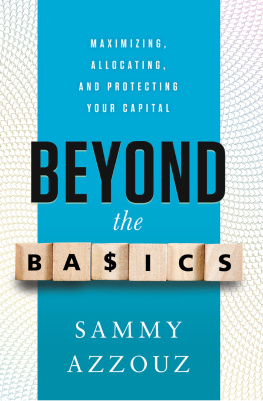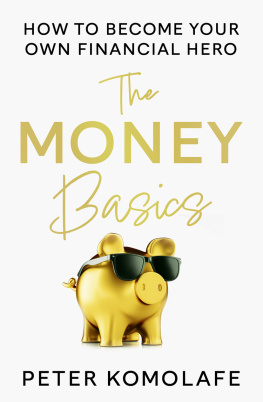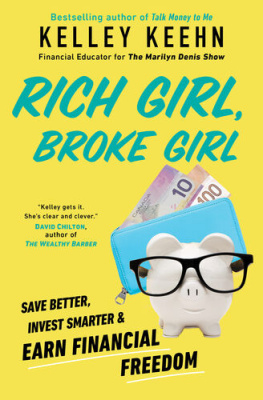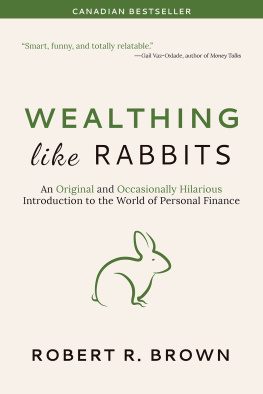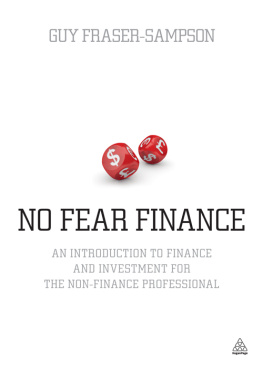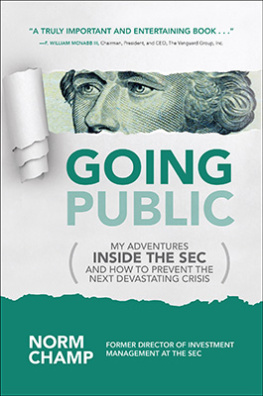
This publication is designed to provide accurate and authoritative information in regard to the subject matter covered and is not the opinion of Heritage Financial Services. It is sold with the understanding that the publisher and author are not engaged in rendering legal, accounting, or other professional services.
Published by River Grove Books
Austin, TX
www.rivergrovebooks.com
Copyright 2020 Sammy Azzouz
All rights reserved.
Thank you for purchasing an authorized edition of this book and for complying with copyright law. No part of this book may be reproduced, stored in a retrieval system, or transmitted by any means, electronic, mechanical, photocopying, recording, or otherwise, without written permission from the copyright holder.
Distributed by River Grove Books
Design and composition by Greenleaf Book Group
Cover design by Greenleaf Book Group
Cover images used under license from
Shutterstock.com/Kunst Bilder; Shutterstock.com/sebos
Figure on page 85 used by permission of RegentAtlantic Capital
Publishers Cataloging-in-Publication data is available.
Paperback ISBN: 978-1-63299-278-9
Hardcover ISBN: 978-1-63299-280-2
eBook ISBN: 978-1-63299-279-6
First Edition
To Janine,
my best friend and the woman who made it all possible
Contents
Introduction
T his is my favorite financial story: In 1952, Walmart founder Sam Walton hired a young man named Willard Walker to run his second store in Fayetteville, Arkansas. It was Waltons first managerial hire, and he enticed Walker with an uninspiring offer: move from Oklahoma and work half days for nothing until the opening while sleeping on a cot in the store.
Walton added one kicker: a share of the stores profits. Walkers then boss scoffed that a share of zero equaled zero and tried to talk him out of it. Walker loved the idea and accepted. Later, when Waltons business became Walmart, Walker again pursued a share of the profits.
He borrowed whatever he couldprobably more money than he shouldve been able toto buy Walmart stock. Once again, people scoffed. Only this time, that included the Waltons. Sams brother and business partner, Bud, told Walker that he sure hoped Walker knew what he was doing, because he didnt have as much faith in the stock (and company) as Walker did.
Walker bought more stock than any other Walmart manager. The company experienced tremendous growth. When Walker retired in 1972, his modest lifestyle and stock purchases left him with tens of millions of dollars.
I love this story because its about becoming wealthy through smart decision-making, the most accessible path to success. You can become rich by founding the next great company (Sam Walton), becoming an investment genius (Warren Buffett), or being a great athlete (Michael Jordan). You could also get hit by lightning three times tomorrow while walking your dog. However, anyone can do it by making better financial decisions, la Willard Walker.
Thats what this book is about: individual capital allocation, using your resources to increase your wealth, and making good decisions with your capital to end up with more. If you already know the financial planning basics, the fundamentals, and the mistakes to avoid but are uncertain of what comes next to increase your wealth, this book is for you.
Most personal finance books fall into one of two categories. Some cover the basics: the smart use of credit cards, debt management, buying a home, how mortgages work, and starting to save early. Some deal with managing your own money by turning you into an investment genius, leaving you under the impression that just by following a few simple formulas or spending a few hours a week, you will beat the pros in an extremely competitive arena. Too few books present what you should pursue beyond the basics to increase your net worth if you are not interested in poring over spreadsheets and reading public company filings.
I wrote this book to help bridge that gapto provide an individual capital allocation framework for those looking for what to do next to have more money.
WHAT IS CAPITAL ALLOCATION?
Capital allocation is a business concept dealing with a corporations ability to use its resources (capital) to maximize shareholder wealth. In his fantastic book, The Outsiders: Eight Unconventional CEOs and Their Radically Rational Blueprint for Success, William N. Thorndike profiles CEOs who excelled at capital allocation. Its worth reading in full, but one example helps highlight the concept. Its the track record of someone who Warren Buffett himself has said had the best operating and capital deployment record in American businessHenry Singleton, CEO of Teledyne.
Google his name and a top result will be a video lecture at the New York Society of Security Analysts by Leon Cooperman, titled A Case Study in Financial Brilliance: Dr. Henry E. Singleton of Teledyne Inc. Cooperman managed a hedge fund, Omega Advisors, which over a twenty-six-year span outperformed the market by almost 3 percent per year. When brilliant investors call you brilliant, youre damn good.
And Singleton was damn good. Between 1963 and 1990, he delivered a remarkable 20.4 percent compound annual return to his shareholders, compared with 8 percent for the S&P 500.
His company, Teledyne, was one of the 1960s-era conglomeratescompanies with many different and unrelated business units. Their stocks were hot back then. They grew by using their own stocks lofty stock prices to acquire other companies, which drove their stock prices yet higher, enabling them to buy more companies, and so the cycle continued.
Cash poured into Teledynes headquarters. Markets are fickle and the love for conglomerates as a category eventually faded. Singleton found himself in a situation where the market price for his companys stock was cheap and other companies were overpriced. Singleton reacted by buying back Teledyne stock. Nowadays, thats not particularly innovative. Indeed, the 2009 through 2019 US stock bull market was partly fed by massive share repurchases. But Singleton was a pioneer who bought back 90 percent of Teledynes shares.
The repurchases generated a whopping 42 percent compound annualized return, because he was now buying low after selling high. The average price-to-earnings ratio for Teledynes stock issuances was over 25; in contrast, the average multiple for his repurchases was under 8.
Singletons 1980 share buyback was the most impressive. Teledynes stock was extremely cheap and interest rates in the US had just fallen. He issued bonds to raise capital at a low interest rate and initiated a tender offer to purchase shares. The tender offer was heavily oversubscribed. When interest rates rose and the bonds his company issued to finance the purchase dropped in price, he bought them back and retired the debt at a discount. During this time, he also took advantage of a severe bear market to reinvest the companys insurance portfolio, increasing the total allocation to stocks from 10 percent to 77 percent by 1981.
Why does this matter? Capital allocation concepts like Singleton used can be appropriated by individual investors to help them increase their wealth. A businesss main goal is to increase shareholder value. Theres a lot of information about the various ways theyve attempted it, as well as a quantifiable way to assess those methods. Singleton provides just one example. An individual plugging into this knowledge base and tailoring the most effective corporate capital allocation methods to their own situation can increase their financial success.
Next page
